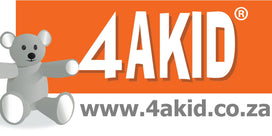Mealtime with your baby is an exciting milestone filled with exploration and discovery. However, it’s also a time when safety becomes paramount. From choking hazards to burns and food allergies, mealtime can come with risks if you’re not prepared. Ensuring your baby’s safety doesn’t have to be complicated, though—it’s all about adopting simple practices that make meals enjoyable and safe. Here are 10 essential tips to help keep your baby safe at mealtime.
1. Always Supervise Your Baby
Never leave your baby unattended during meals. Babies can choke on food in seconds, so it’s crucial to stay close by and watch them as they eat. Even if they seem comfortable and independent, your presence ensures you can act quickly in case of an emergency.
2. Use a Secure High Chair
Invest in a sturdy high chair with a five-point harness to keep your baby safely seated. Make sure the high chair is stable, with a wide base to prevent tipping over. Always buckle your baby in securely, even if the meal is quick. Avoid using chairs that can easily slide or topple, especially on smooth floors.
3. Cut Food Into Small, Manageable Pieces
Choking is one of the most significant mealtime risks for babies. Always cut food into small, bite-sized pieces appropriate for your baby’s age and chewing ability. For example, cut grapes, cherry tomatoes, and sausages into quarters, and shred or mash foods like meat or bread to make them easier to swallow.
4. Avoid Common Choking Hazards
Some foods pose a higher choking risk and should be avoided until your baby is older and more experienced with eating. These include whole grapes, popcorn, hard candies, nuts, chunks of raw vegetables, and sticky foods like peanut butter. Opt for softer, easy-to-dissolve foods for younger babies.
5. Check Food Temperature Carefully
Always test the temperature of food and drinks before serving them to your baby. Foods that are too hot can burn their delicate mouths. Stir food thoroughly after heating in a microwave to eliminate hot spots, and let it cool to a safe temperature before offering it.
6. Introduce New Foods Slowly
When introducing new foods, do so one at a time and wait a few days before trying another. This helps you monitor your baby for any allergic reactions, such as rashes, swelling, vomiting, or difficulty breathing. Keep track of what your baby eats to identify potential triggers in case of a reaction.
7. Keep the Eating Area Clean and Free of Hazards
A clutter-free eating space reduces distractions and safety risks. Keep small objects, hot beverages, sharp utensils, and choking hazards like plastic wrappers out of your baby’s reach. Make sure your baby’s high chair tray and surrounding area are clean to prevent them from putting unsafe items in their mouth.
8. Encourage Slow Eating
Babies are naturally curious and may try to stuff too much food in their mouths at once. Encourage slow eating by serving small portions and teaching them to chew thoroughly before swallowing. Show them how to take their time by modelling calm, deliberate eating yourself.
9. Be Prepared for Choking Emergencies
Knowing how to respond to a choking emergency can save your baby’s life. Familiarise yourself with infant first aid techniques, such as back blows and chest thrusts. Enrolling in a CPR course for parents can also give you the confidence and skills to act quickly if needed.
10. Create a Calm Mealtime Environment
Babies can be easily overwhelmed by noise, distractions, or a chaotic environment during meals. Create a calm and focused atmosphere by turning off the TV, silencing phones, and sitting with your baby while they eat. A stress-free environment not only enhances safety but also makes mealtime more enjoyable for everyone.
Conclusion
Keeping your baby safe at mealtime is about preparation, awareness, and vigilance. By following these tips, you can reduce risks and create a positive mealtime experience that supports your baby’s growth and development. Remember, safety doesn’t mean you have to eliminate the fun—mealtime can be a joyful bonding time for you and your baby.
FAQs
1. When can I introduce solid foods to my baby?
Most babies are ready for solids around six months, but consult your paediatrician to determine the right time based on your baby’s development.
2. What should I do if my baby chokes during a meal?
Remain calm and follow infant choking first aid, including back blows and chest thrusts. If the obstruction isn’t cleared, call emergency services immediately.
3. How can I tell if my baby has a food allergy?
Signs of a food allergy include rashes, swelling, vomiting, diarrhoea, or difficulty breathing. Introduce new foods one at a time to identify potential allergens.
4. Is it safe to give my baby water during meals?
Babies under six months should not have water, as breast milk or formula provides all their hydration. After six months, small sips of water can be introduced alongside meals.
5. How do I know if the high chair is safe for my baby?
Ensure the high chair has a five-point harness, a wide base for stability, and meets current safety standards. Always supervise your baby while they are seated in the high chair.










